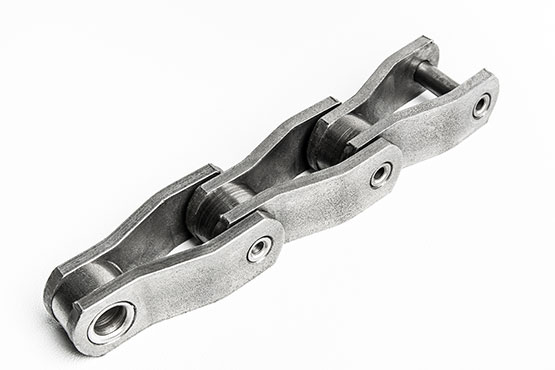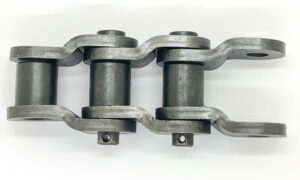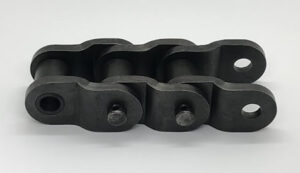
Rotary (WELDED STEEL CHAIN) chains are a type of drive chain that was originally created for use in industrial applications. They have been used in many different industries, such as mining and construction, where they are able to withstand heavy loads and resist wear.
Unlike a normal chain with inner and outer links, the wear pattern on each hinged part is the same. Since all links are manufactured in the same shape and alignment, lengthening and shortening operations can be done easily. Here you can find answers to questions such as “What is a Rotary Chain (Welded Steel Chain) ?” or “What are the advantages of using them?”.
How do Rotary (Welded Steel Chains) Chains work?
Rotary chains, also called offset sidebar chains, are often applied in drum drives. In most cases, the teeth are placed on the drum and drive the rotary chain from the side.
The advantages of this design are:
The drive mechanism of a rotary chain is simple and inexpensive. It has no gears or other high-speed driving mechanisms that can make noise or cause wear and tear on your drive system.
A rotary chain can withstand higher loads than a gear drive, so you can use less power from your motor to generate torque with a rotary chain than with a gear drive. This means that you can use smaller motors with fewer gears, which reduces weight and increases efficiency. It also means that your motor will last longer because it’s not being stressed as hard by gear drives that require more force to turn them around.
The rotational speed is constant regardless of load or speed setting (as opposed to a gear drive which varies according to load). This means there is less chance for backlash errors when changing speeds or loading conditions (ie: slowing down while operating at high speed).
Usage Areas Of Welded Steel Mill Chains / Rotary Chains WH78
This type of chains are used in iron and steel industry, rolling mills, asphalt industry, cement industry, chemical industry, sugar industry, wood industry heavy load lifting systems and pipe pulling plants.
Discover more about Rotary Chain (Welded Steel Chain) chains at Makelsan!
You can review the “MAKELSAN SPECIAL CHAIN CATALOG” to examine the examples of the Welded Steel Mill Chains / Rotary Chains WH78 we produce and for more detailed information.
Rotary chain conveyors are used to transporting unit loads and bulk goods. Rotary chain conveyors feature cranked links for greater elasticity and improved cushioning of violent impacts. Most conveyor chains used in industry are not standard versions.
Yes, roller chains are available in different sizes and configurations depending on the industry of usage.
When replacing a broken or worn-out roller chain, you must first determine what kind of machine it is used on: industrial machinery or construction equipment. The reason why this matters is that each industry has its own standards for sizing rollers. For example, an industrial machine may use metric measurements while construction equipment uses standard units of measurement like inches or feet. This information will help you find the right size for your machine so that your new roller chains fit correctly when installed correctly onto your existing sprockets.
At times, it may be challenging not to make a mistake buying a replacement Rotary Chains (Welded Steel Chains) if you don’t know the size standard name it goes by in the ANSI or ISO standards or the exact roller chain dimensions, such as overall width, roller width and diameter, and plate height and thickness.
The plate height is the distance between the center of each pinhole to the center of its corresponding link pinhole. The plate thickness is the distance between two adjacent plates. In most cases, roller chains are made up of two plates (with some exceptions) with one being stationary while the other moves over it to transmit power from one shaft to another.





